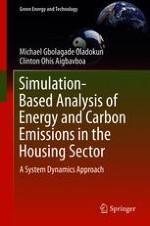2018 | OriginalPaper | Buchkapitel
2. Energy and Carbon Emissions in Housing
verfasst von : Michael Gbolagade Oladokun, Clinton Ohis Aigbavboa
Erschienen in: Simulation-Based Analysis of Energy and Carbon Emissions in the Housing Sector
Aktivieren Sie unsere intelligente Suche, um passende Fachinhalte oder Patente zu finden.
Wählen Sie Textabschnitte aus um mit Künstlicher Intelligenz passenden Patente zu finden. powered by
Markieren Sie Textabschnitte, um KI-gestützt weitere passende Inhalte zu finden. powered by
